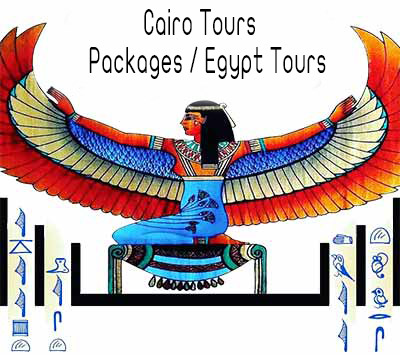The location of the Luxor Museum:
It’s located on the East Bank of the Nile in Luxor between Karnak Temple in the North and Luxor Temple in the South.
The museum grounds are 55 meters long and 29 meters wide, and its facade was designed to face the Nile.
The description of the museum:
The museum opened for the public for the first time in 1975. However, at the time, it didn't compare to the Egyptian antiquities museum in Cairo, but as time passed, the Egyptian supreme council of antiquities started adding more and more items and displays to the Luxor Museum to increase the number of tourists.
A garden in the museum contains a number of interesting displays combining a big open-air museum. There are many sculptures from the pharos era, especially the new kingdom located in the garden of the Luxor Museum.
Visitors, after viewing the displays in the garden, enter the museum through a large glass door. The main hall of the museum consists of two levels with spiral corridors linking the levels together and giving the museum a dynamic atmosphere different from other old traditional museums. These spiral corridors allow the visitors to move around easily in the museum without causing any.
The first floor of the Luxor museum, can display a magnificent collection of Egyptian sculptures, including an amazing statue of the crocodile god, Sobek that was brought from his temple in Kom Ombo. There are also the remaining of the walls of the temple of Amenhotep IV that once stood high in the city of Luxor.
There are also some colorful coffins on the first floor of the Luxor Museum. To the left side that are some remarkable statues that were added to the museum in 1989
The Luxor Museum contains displays that cover a period of more than four thousand years, from the prehistoric era to the Islamic era. The displays in the Museum have only chosen examples of the huge collection of antiquities that are being kept in stores.
The most important items on display in the Luxor museum include:
Mud brick walls of the Temple of Akhenaton (1347 -1364 BC).
A statue of Thutmose III, the sixth Pharaoh of the Eighteenth Dynasty. The statue is 90 cm long and made out of special rock formation. Thutmose is one of the greatest pharos of the time.
A statue of Amenhotep III that was brought from Madinat Habu in the west bank of Luxor. Amenhotep III was an important figure in ancient Egypt (1365 – 1403 BC) and he was he was raised to the rank of gods during the Ptolemaic era. His statues in the Luxor Museum is remarkable as it is 130 cm and it was made out of pure black granite.
A statue called "Oshabty", or the "answerer" in the hydrographic language. He was the one doing the cultivating work in the afterlife for the owner of the tomb. This statue goes back to the end of the 18th dynasty and it was made out of colored wood. The statue is 23 cm long and it is of a man holding an ax in his right hand a bag of seeds in his left hand.
A cartoon mummy cover that was found in one of the tombs of the west bank of Luxor. The cover is 175 cm long and 42 cm wide. It belongs to the third intermediate period, the dynasties 21 to 24. It was made out of flax and plaster. These mummy covers were called cartonnage and it was used as an outer cover of the mummy covered with funerary scenes.
Some displays from the collection of the Tut Ankh Amun tomb in the Valley of the Kings in the west bank
The royal mummies of Ahmose I and Ramsis I that were added to the museum in 2004
The museum features a collection of Coptic antiquities including a white and black colored pottery dish found in the 5th century AD.
The museum displays many Islamic items as well as the collection of small bowls that belong to the Mamluk era going back to the 14th century AD.
A tall Pillar of King Sesostris I. made out of colored limestone
A huge head of a statue of Akhenaton wearing a double crown
A calcite statue of Amenhotep III and the crocodile god Sobek.
Part of a wall from the Temple of Akhenaton at Karnak.
Collection of 26 well preserved New Kingdom sculptures found buried in a near the Luxor Temple in 1989.
A statue of Horemheb was the last king of the 18th Dynasty with the god Atom
A black granite statue of the famous goddess Hathour, the goddess of beauty.
A statue of the goddess Inet, the wife of the god Monto, from the reign of Imhotep III.
A granite statue of the goddess Mot together with the famous god Amun, the statue goes back to the reign of Ramsis II.
A canopy head of queen Toya from the reign of Seti the first.
A wax statue of Ramsis the 11th accompanied by the god Ma'at that was discovered in 1978 in the west bank.


